The power of music to stir emotions and connect people is undeniable. The guitar and banjo, classic instruments in folk and country genres, have been instrumental in crafting songs that resonate deeply with listeners. This document will delve into the world of guitar and banjo songs, exploring their unique chords, rhythms, and the narratives they often tell through their lyrics. Whether you’re a musician wanting to increase your repertoire or an enthusiast interested in understanding more about these genres, this exploration promises to be a fascinating journey.
Taylor Swift – Mean
Taylor Swift’s song “Mean” is a prime example of contemporary guitar and banjo music. This country-pop crossover is enriched with Swift’s signature storytelling lyrics and incorporates a robust banjo rhythm that gives it a unique edge. The song’s lyrics depict a narrative of resilience and overcoming adversity, while the chords and tempo are thoughtfully designed to echo this message. For guitar, the song primarily uses the chords of E, A, and B, making it a simple yet effective piece for beginners to learn. The banjo parts, while more complex, offer a rewarding challenge for more advanced players. “Mean” stands as a testament to Swift’s musical versatility and the enduring popularity of guitar and banjo in modern music.[1]
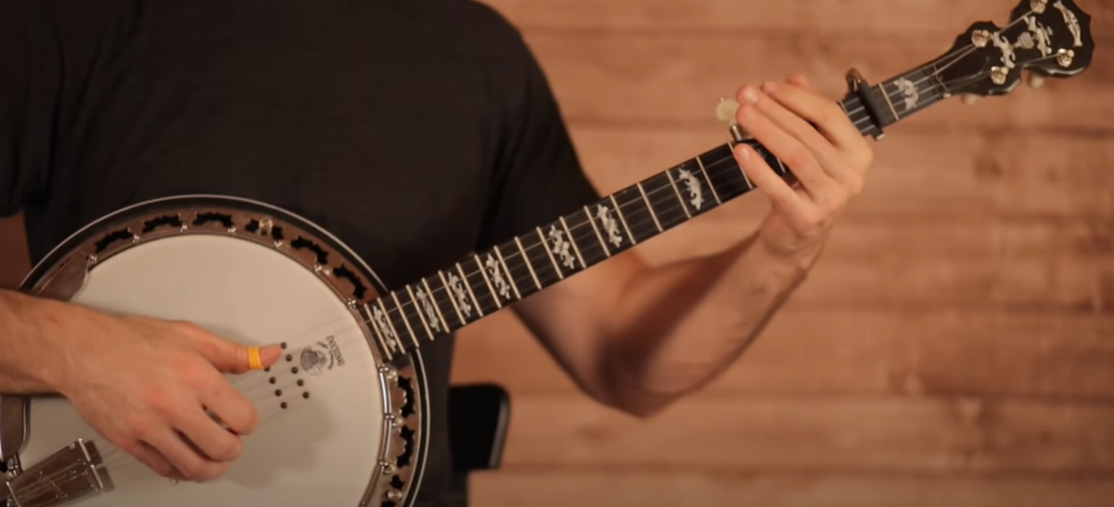
Keith Urban – Somebody Like You
Keith Urban’s hit song “Somebody Like You” is another brilliant showcase of the emotive potential of guitar and banjo tunes. This country-pop anthem features a compelling blend of Urban’s dynamic guitar strumming and the rhythmic accents of the banjo. The song’s uplifting lyrics speak of love and longing, underscored by the catchy melody written primarily in D, G, and A chords on the guitar. The banjo section, while subtle, adds a layer of complexity and depth to the composition, enhancing the overall feel of the song. For fans of the genre or musicians looking to expand their skill set, “Somebody Like You” is an excellent addition to any guitar and banjo repertoire. Its blend of simplicity and intricacy offers a valuable learning experience for both beginner and intermediate players.[1]
Danny Barker – Eh La Bas
Danny Barker’s rendition of the traditional Creole song “Eh La Bas” is a true representation of the rich tapestry of guitar and banjo music. Characterized by its lively tempo and vibrant banjo accompaniment, “Eh La Bas” transports listeners to the heart of New Orleans’ Creole culture. Barker’s masterful guitar work, in sync with the inviting rhythm of the banjo, creates a feel-good ambiance that is the hallmark of this song. The lyrics, sung in Creole French, present an enchanting narrative of celebration and camaraderie, adding to the song’s charm. For guitar players, the song primarily uses the chords of G, C, and D, offering an exciting venture for those keen on exploring different musical cultures. The banjo parts, while intricate in their patterns, offer an in-depth experience in traditional Creole musicianship. Altogether, “Eh La Bas” serves as an enriching exploration of the versatility and cultural significance of guitar and banjo music.[1]
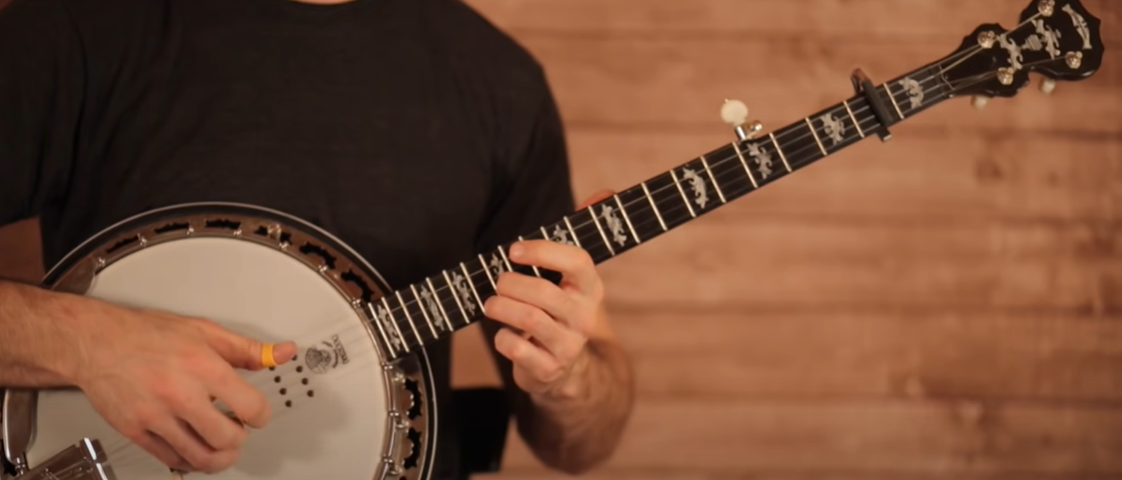
Eric Church – Creepin
One cannot talk about guitar and banjo songs without mentioning Eric Church’s “Creepin'”. This country-rock number is a testament to Church’s sonic innovation, skillfully using the guitar and banjo to create a haunting, catchy tune. The guitar parts of the song mainly revolve around the chords of E minor and G, providing a moody, atmospheric backdrop for the lyrics. The banjo, meanwhile, punctuates the music with its distinct, twanging rhythm, adding a touch of traditional country to this otherwise modern track. Church’s lyrics tell a story of a lingering love, the memory of which keeps “creepin'” back to the protagonist. For musicians, “Creepin'” poses an interesting challenge with its blend of rock and country elements, offering an opportunity to experiment with diverse styles within the context of guitar and banjo music. For listeners, it stands as an immersive example of the narrative potential and stylistic versatility of these beloved instruments in contemporary music.[1]
Harvey Reid – Jesse James
Harvey Reid’s version of the traditional ballad “Jesse James” offers a compelling exploration of the guitar and banjo’s narrative potential. The song’s lyrics capture the story of the infamous outlaw, Jesse James, providing an interesting historical narrative. Reid’s deft guitar work, primarily focused on the chords of E minor, G, and A, creates a somber, reflective atmosphere that befits the song’s subject. The banjo, meanwhile, adds a bright layer of melody and rhythm that elevates the mood, keeping the song lively and engaging. Reid showcases his exceptional musicianship and his deep understanding of folk traditions with this rendition, making “Jesse James” an enriching inclusion for any guitar and banjo player’s repertoire. This song stands as a powerful testament to the storytelling prowess of traditional folk music and the evocative capabilities of the guitar and banjo.[2]
Reverend Gary Davis – Please Baby
Reverend Gary Davis’ “Please Baby” is a remarkable example of guitar and banjo music steeped in the blues tradition. This song demonstrates Davis’ masterful guitar and banjo technique, blending rhythmic strumming with intricate fingerpicking to create a sound that is both soulful and captivating. The lyrics, filled with raw emotion and longing, are underpinned by a melodic structure primarily using the chords of A, D, and E on the guitar. The banjo section provides a rhythmic backbone to the piece, its syncopated patterns serving as the heartbeat of the song. For guitar and banjo players, Davis’ “Please Baby” offers an opportunity to delve into the roots of blues music and broaden their understanding of the genre. As a listening experience, the song stands as a testament to Reverend Gary Davis’ exceptional musical skill and his significant contribution to the evolution of guitar and banjo music.[2]
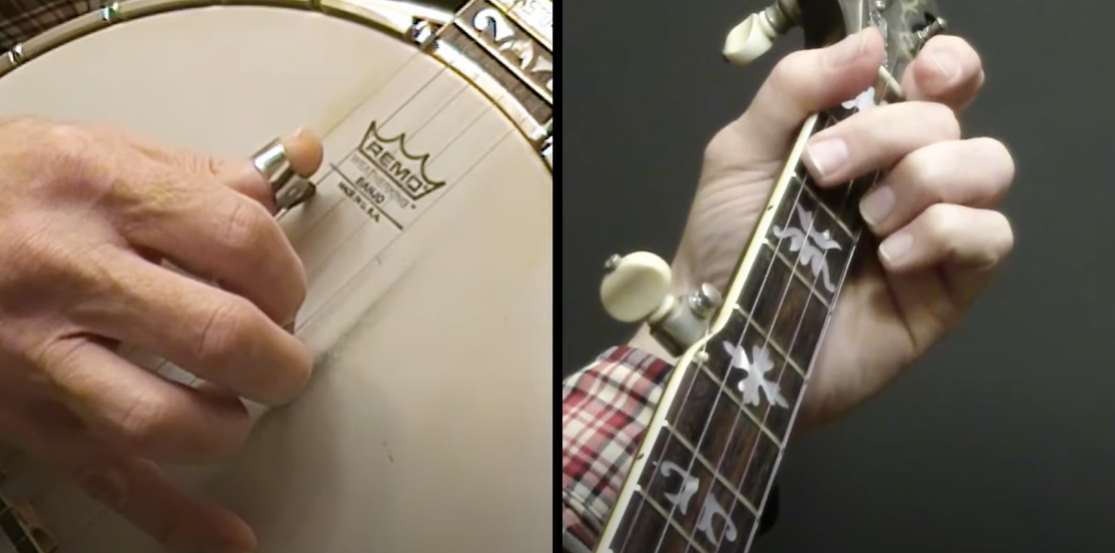
Joe Satriani – The Feeling
Instrumental rock doesn’t often feature banjo, but when it does, it can produce uniquely enchanting results. Joe Satriani’s “The Feeling” is a prime example of this. While Satriani is primarily known for his virtuosic electric guitar skills, in this piece, he seamlessly incorporates a banjo. The song is a melodic journey, with Satriani’s guitar work fluidly interacting with the distinctly resonant banjo chords. The tune primarily revolves around the guitar chords of E, A, and D, providing a melodic foundation on which the banjo can weave its intricate patterns. “The Feeling” is a perfect addition for guitar and banjo players looking to explore the less-charted realms of instrumental rock. The piece not only broadens their technical prowess but also allows them to experience the emotive depth that the interplay between guitar and banjo can create. As a listening experience, it stands as a testament to Joe Satriani’s incredible versatility and his ability to transcend traditional genre boundaries.[2]
Kacey Musgraves – Merry Go Round
Kacey Musgraves’ “Merry Go Round” is an evocative piece that showcases the beauty of guitar and banjo music within the contemporary country genre. The song utilizes the melancholic tones of the banjo, complimented by the rhythmic strumming of the guitar, to create a backdrop for Musgraves’ illuminating lyrics about the mundane cycles of small-town life. The guitar section primarily employs the chords of Em, G, D, and A, creating a melodic framework that enhances the storytelling aspect of the song. The banjo, with its distinct twangs, adds a traditional country element that balances the modern guitar chords. For guitar and banjo players, “Merry Go Round” is an inviting introduction to Musgraves’ narrative style and the broader contemporary country scene. As a listening experience, it provides an intimate look into the poignant themes that Musgraves explores in her songwriting, underpinning the rich cultural tapestry of guitar and banjo music.[2]
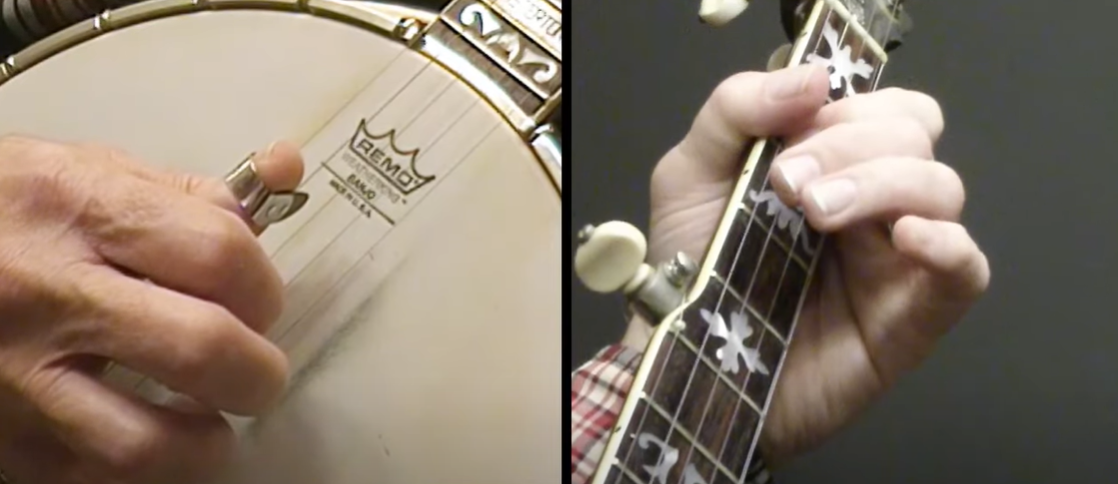
FAQ
Can I play guitar songs on banjo?
Yes, it is entirely possible to play guitar songs on the banjo. While the two instruments have distinct sounds and playing techniques, they share similarities in terms of chord structures and melodic patterns. The banjo’s unique tone can bring a new texture and character to songs originally composed for the guitar. It’s important to note, however, that some adaptations may be required in the transition from guitar to banjo. This could include adjusting chord voicings, transposing keys, or modifying picking patterns to suit the banjo’s five-string setup. In the end, translating guitar music to the banjo can be a rewarding challenge that expands your musicality and allows you to explore the versatility of these beautiful stringed instruments.
How similar are guitars and banjos?
While guitars and banjos are both stringed instruments, they have significant differences in construction, sound production, and playing techniques. Guitars typically have six strings and are played with a plectrum or fingers, producing a wide range of tones from deep bass to high treble. On the other hand, banjos commonly have four or five strings and are often played using a specific fingerpicking style. The banjo’s distinctive twang results from its drum-like resonator, which gives it a bright, sharp tone. Despite these differences, they share similarities in terms of chord structures, and a musician adept in one can usually transition to the other with some practice. Both instruments are also central to a variety of music genres, including folk, country, blues, and rock, underscoring their versatility and enduring appeal in the music world.
What is the banjo song called?
The term “banjo song” is used broadly to refer to any musical piece that features the banjo as a primary instrument. There is no specific song titled “The Banjo Song,” as it depends on the context in which it is mentioned. However, one well-known piece often associated with this title is “The Banjo Song” by The Big Three, a folk trio from the 1960s. This song is a playful adaptation of Stephen Foster’s “Oh! Susanna,” with new lyrics set to the original melody. However, in a broader sense, any song that prominently features the banjo can be referred to as a “banjo song.” Notable examples include “Foggy Mountain Breakdown” by Earl Scruggs, “Cripple Creek” from traditional old-time repertoire, and “Dueling Banjos” from the film “Deliverance.” These songs showcase the banjo’s range, from its roots in folk and bluegrass music to its versatility in other genres.
Is there a 6 string banjo?
Yes, a 6 string banjo, also known as a banjitar or guitjo, does exist. It blends the body of a banjo with the neck and tuning of a six-string guitar. This hybrid instrument is designed to allow guitarists to achieve the bright, percussive tone of the banjo without needing to learn new chord shapes or picking techniques. The 6 string banjo is often used in country and folk music but can be adapted to a variety of genres. However, it’s important to note that while it imitates the banjo’s sound, the tonal range and playing techniques can differ from those of a traditional 4 or 5 string banjo.
Can a banjo have 3 strings?
Yes, a banjo can indeed have three strings. While they are less common than four or five-string banjos, three-string banjos, also known as “terz banjos,” do exist. They are often used in jazz bands and they offer a unique, bright sound. The three strings also simplify the learning process, making these banjos a good starting point for beginners. Moreover, they are ideal for players seeking to explore the banjo’s versatility and to experiment with different sounds and techniques. It’s important to note, however, that the repertoire for three-string banjos may be more limited compared to their four and five-string counterparts.
Can a banjo have 8 strings?
Yes, an 8-string banjo, also known as a “mandolin-banjo” or “banjolin”, does indeed exist. This unique variation of the banjo is essentially a fascinating hybrid of a banjo and a mandolin. It combines the body of a banjo with the double course strings of a mandolin, resulting in a truly distinctive instrument.
The 8-string banjo is typically tuned the same way as a mandolin: GDAE, from low to high. This tuning allows mandolin players to easily approach this instrument without having to learn new tuning or chord structures. However, it’s important to note that the 8-string banjo possesses its own set of playing techniques and distinctive sound, setting it apart from both the mandolin and traditional banjos.
The addition of extra strings on the banjolin creates a rich, resonant sound, which is both louder and more percussive compared to a traditional mandolin. This enhanced sound quality can be attributed to the banjo-style resonator. Although the 8-string banjo may not be as commonly seen as its 4 or 5-string counterparts, it is still cherished by musicians who seek to explore a unique sound and enjoy the harmonious blend of these two traditional instruments.
In summary, the 8-string banjo is a captivating musical instrument that borrows features from both the mandolin and banjo while possessing its own distinct character. Its melodious sound and versatile playing techniques make it a cherished choice for musicians looking to create music that stands out.
Useful Video: Cripple Creek (Banjo & Guitar)
Conclusion
Banjos and guitars, while distinct in their construction, sound, and playing techniques, share a rich and intertwined musical tradition. The versatility of these instruments is showcased not only through the diversity of genres they can adapt to, but also through the variations found within the instruments themselves.
Guitars, with their iconic six strings, have become synonymous with melodic chords and soulful solos. Whether it’s the warm, mellow tones of an acoustic guitar or the electrifying riffs of an electric guitar, this instrument has captivated musicians and audiences for generations. From classical compositions to blues, rock, country, and beyond, the guitar’s harmonious versatility knows no bounds.
On the other hand, banjos, with their distinctive twang and rhythmic plucking, have their roots deeply embedded in folk, bluegrass, and country music. With their unique resonating drum-like body and the signature metal strings, they evoke images of front porch jam sessions and lively hoedowns. From the three-stringed banjo with its punchy, percussive sound to the intricate eight-stringed banjo that adds depth and complexity, this instrument brings a lively energy to any musical ensemble.
It is this shared language of music that reminds us, despite our individual differences, of our collective love for rhythm, melody, and harmony. These stringed instruments have the power to transcend cultural boundaries and historical periods, contributing to their enduring appeal among musicians and music aficionados alike.
So, whether you are a seasoned guitarist intrigued by the sharp twang of a banjo or a banjo player looking to explore the lush tones of a guitar, there is a wealth of music awaiting your discovery. Dive into the intricate fingerpicking patterns of bluegrass or immerse yourself in the soulful melodies of the blues. Let the strings guide your fingers and the music guide your heart.
Embrace the unique qualities of each instrument and explore the boundless world of musical expression.
References:
- https://blog.deeringbanjos.com/blog/10-great-6-string-banjo-songs
- https://studentofguitar.com/banjitar-songs/




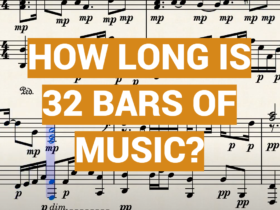
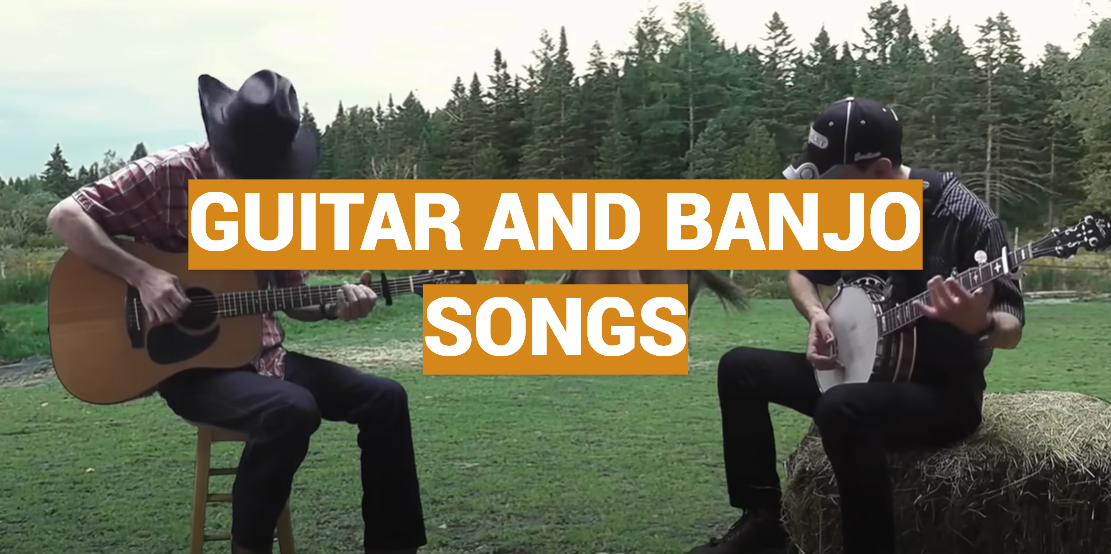
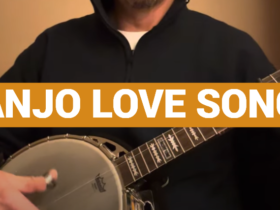

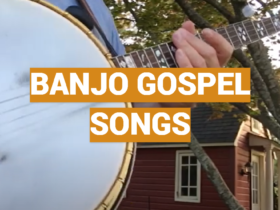
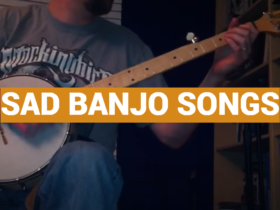
Leave a Reply